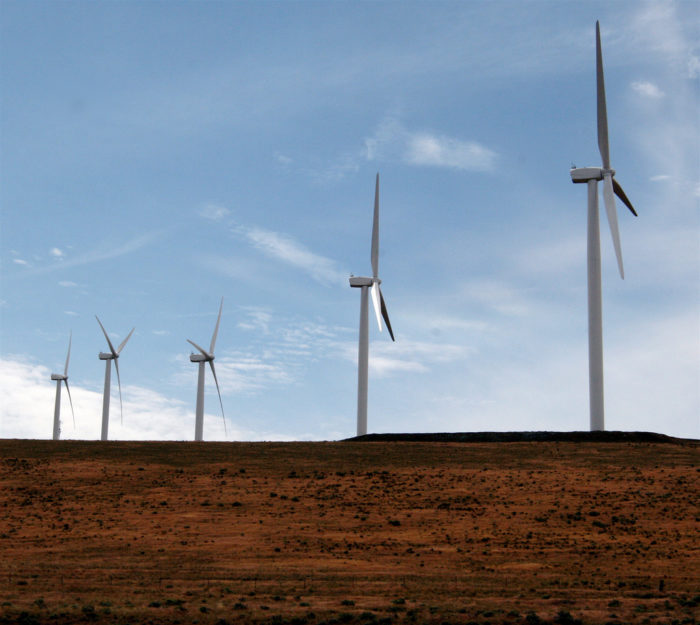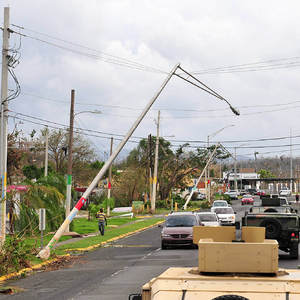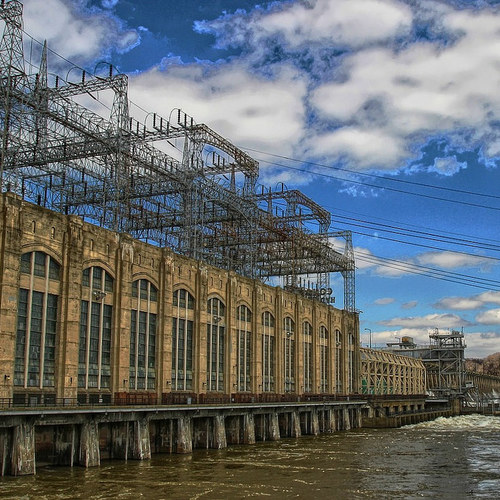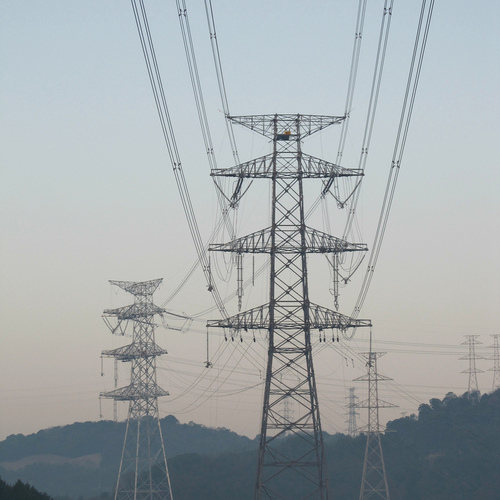
Image Credit: Steven Jackson / CC BY 2.0 / Flickr
Science is messy, but it doesn’t have to be dirty.
On June 19, a group of respected energy researchers released a paper in the journal Proceedings of the National Academy of Sciences (PNAS) that critiqued a widely cited study on how to power the U.S. using only renewable energy sources. This new paper, authored by former NOAA researcher Christopher Clack and a small army of academics, said that the initial 2015 study had “errors, inappropriate methods and implausible assumptions,” about using only the sun, wind, and water to fuel the U.S.
What followed was a storm of debate as energy wonks of all stripes weighed in on the merits of the PNAS analysis. Mark Z. Jacobson, a Stanford University professor who was the lead author of the 2015 study, shot back with detailed rebuttals, in one calling his fellow researchers “fossil fuel and nuclear supporters.”
Why the big kerfuffle? As an energy researcher who studies the technologies and policies for modernizing our energy system, I will try to explain.
In general, getting to a clean energy system — even if it’s 80% renewable — is a well agreed-upon goal and one that can be achieved; it’s that last 20% —and how to get there — that forms the main point of contention here.
‘Energy Twitter’ on fire
Jacobson’s seminal paper, which was also published in PNAS, tied together a significant amount of work of his own and others showing that all energy used for all purposes in the U.S. could come from with wind, water, and solar (WWS) by 2050.
What about when the sun doesn’t shine, the wind doesn’t blow, or water is unavailable? His findings postulated that significant amounts of energy storage would be needed, mostly in the form of heat and hydrogen, to meet energy demand when there isn’t enough renewable energy and to store it when there’s too much. Jacobson and his co-authors also concluded that this scenario would be cheaper than a world that relies on other technologies such as nuclear, carbon capture, and other methods of reducing carbon emissions.
The Clack rebuttal was blunt and cut deep at the assumptions that underlie the work of Jacobson and colleagues. The same PNAS issue also included a counter-rebuttal to Clack from Jacobson.
Energy Twitter — that is, energy wonks like me on Twitter — exploded.
So why all the fuss?
Much of the heat from this debate seems to stem from Jacobson making some pretty bold claims in and about his paper, going so far as to tell MIT Technology Review that “there is not a single error in our paper.” That is a very, very bold claim and, depending on how it is interpreted, could be read to say that the study authors’ model is perfect, which of course it is not, as none are.
This debate may seem arcane, but it has significant political and societal implications.
Some celebrities have signed on to Jacobson’s vision and have pressed for policies formed around his analyses of the feasibility of an entire energy system that runs 100% on wind, water, and solar. If policymakers buy into the technical and economic assumptions in the paper, those assumptions will have big implications for the direction of state, local, and national policies.
Detractors, meanwhile, have raised a number of concerns. In particular, they argue that decisions made based on Jacobson’s analyses alone could lead to serious over-investment in only the technologies considered, which could possibly backfire if the costs turn out to be higher than expected.
The nitty-gritty
To make projections around how the future energy system will work, researchers create computer-based models, input assumptions, and then run simulations.
The rebuttal from Clack and his co-authors focused on four major issues they saw with the WWS paper: 1) modeling errors, 2) implausible assumptions, 3) insufficient power system modeling, and 4) inadequate scrutiny of the input climate model, which informs how much solar and wind power are available for power generation. Here are some highlights with my own thoughts sprinkled in.
Clack takes issue with the amount of hydroelectric power that Jacobson assumes is available. In their rebuttals, they spar over the exact numbers, but Jacobson assumes there will be about the same amount of total energy produced from hydropower in 2050 as today, although when, and at what rate, that energy is produced is a crucial question.
In Jacobson’s model, there is a significant increase in hydropower capacity — up to 1,300 gigawatts (or about 10 times current capacity), which appears to run for at least 12 hours straight in some days of the model output. Jacobson says this is possible by installing more turbines and generators at existing dams, just not using them very often.
But dams are built with specific maximum flow rates because if you let too much water flow through a dam, you can flood areas downriver. Jacobson has since admitted that providing this much extra power from existing dams would be hard.
I recently took a tour of Hoover Dam. One of the first things the tour guides tell you is that the dam was built for irrigation and flood control, and that electricity production is a nice side product. So expecting that dams in the country could boost their output might be harder than the analysis implies.
Implausible assumptions
Clack questions a long list of input assumptions of Jacobson’s model. A number are related to how quickly technologies can mature and be used at large scale, including underground thermal energy storage, phase change materials to store solar thermal energy, and hydrogen as a usable fuel. Other critiques focus on assumptions around how flexible the demand for energy can be — a key consideration when dealing with variable sun and wind power. Then there’s the amount of electric transmission power infrastructure needed, the costs of all the capital required, the pace of investment needed, and land use issues.
Some criticisms are probably fair. I tend to be bullish on the potential of technology to advance rapidly, but having worked in residential energy use, and energy retrofits in particular, I find that Jacobson’s assumptions about the amount of geothermal energy storage retrofits for heating and air-conditioning in buildings are hard to fathom.
I have some reservations on the ability of 67% of demand to be flexible. I also have some questions on the pace of investment required in Jacobson’s scenario.
Insufficient power system modeling
Clack attacks LOADMATCH, the power system model in Jacobson’s analysis, as being too simplistic. The main criticism of LOADMATCH is that it does not consider frequency regulation — the need to keep the frequency of the power grid steady at 60 Hz, which is a very important aspect of keeping the power supply reliable.
One piece of anecdotal information: Jacobson states in the paper Supplementary Information that it takes LOADMATCH about three to four minutes to simulate an entire year. Our simulations of just the Texas electricity market can take hours to run, and can take significantly longer for simulations of high levels of renewables.
After reading both papers, both supplementary information sections, the counter-rebuttal, a lot of news articles and tweet-storms (from other energy folks I trust), I find myself thinking that the burden of proof is still in Jacobson’s court. There are many lessons to learn here.
But, in the end, my view is that the body of scientific understanding will be stronger for it. The peer review process is slow, uses imperfect human volunteers, and doesn’t always get it exactly right the first time. The list of authors on the Clack rebuttal is impressive, and should be paid attention to. However, if Jacobson’s work can survive this challenge, I figure it will stand the test of time.
Joshua Rhodes is a post-doctoral researcher of energy at the University of Texas at Austin. This post originally appeared at The Conversation.
Weekly Newsletter
Get building science and energy efficiency advice, plus special offers, in your inbox.















8 Comments
Complex models in general are inheritently unreliable because
they rely on a load of variables which may or many not be true and variable they haven't considered. Policymakers love to rely on models because it gives them the justification to push through their own agenda. It reminds me of a speech given by an economist who was working with the USG on assessing the "costs" of carbon/CO2 associated with AGW. The models were all over the place, in fact one (of 3) models predicted a positive correlation. The Administration at the time highlighted the worst case scenario whereas the model which did not was buried in a footnote at the back of the report. IIRC the act of footnoting the conflicting model barely met the legal requirements of government reporting.
It's a food fight, using just the appetizers.
The original Jacobson paper was't promoting a particular set of solutions, addressed what would be necessary to hit 100% renewables, showing a number of different paths, not all of which would be economically or politically feasable. Of the nay-sayer paper, only three of the 20+ authors did any actual reasearch- the rest were all promoters of particular views/solutions.
But getting into a food fight over the 100% solution when the current state of affairs is the renewable fraction is at best a low single digit percentage of the total energy use is just ridiculous. Just how much real fighting can be done with the Cheez Whiz on a Ritz? Wait a least until the first course, when renewables have hit at least a double-digit fraction, when there's some actual food of substance to fight with.
Dana
I agree that fighting over whether renewable energy can supply 100% of our electricity is, at this time, pointless.
Clack says an 80% reduction in CO2 from electricity generation (from 1990 level) is doable by 2030, which would be spectacular. He says it can be done with existing technology and without storage. He relies heavily on high voltage direct current transmission lines, which would integrate the whole country into a single grid. Thus on a dark and still night at my house in Maine, my power could come from an Iowa wind farm.
Clack may not be wrong...
... but that's not the only possible solution, the most likely solution, nor necessarily the cheapest or the easiest to implement.
It's just another pet theory competing with a bunch of other pet theories being offered by people that have very little to do with the actual business of keeping the lights on, or regulating the businesses that do. (Many of the signers-on to Clack's paper were from industry lobbyist organizations and academics with other pet theories.)
But much of the criticism Clack et al have leveled against Jacobson's work has no merit- it's just a food fight, a weird sideshow..
If you find it as fascinating as a car wreck, you can get some flavor of it in this interview of Jacobson by GTM's Energy Gang crew:
https://soundcloud.com/the-energy-gang/the-bitter-fight-over-100-renewables
...and Clack's response:
https://www.greentechmedia.com/articles/read/why-100-renewables-creates-an-evolutionary-dead-end
Predicting the future...35 years out??
Its difficult to make accurate predictions for many things, looking only 3 years into the future. Five year predictions seems like guesswork when it comes to technology. They are talking about 2050 from 2015, 35 years. As the saying goes, there will be as much technological progress in the next 10 years as the previous 100 years. Remember the technology for power generation for solar, wind and water in the year 1917? No solar to electric, no ocean power, no sophisticated windmills that generated electricity. That was about the time the electric light switch was the breakthrough technology for the year. So now imagine that much change in the next ten years, to 2027. Then 2037. Then 2047. Seems almost silly to predict technology available even in 2027. You can't just extrapolate from power from dams, power from PV, power from windmills. Those will be outdated by 2027.
...or even 15 years out @ Robert Opaluch
Yesteraday's Greentechmedia blog illustrates the prediction-problem:
https://www.greentechmedia.com/articles/read/the-death-of-alternative-energy
Even when some aspects are kinda-mostly guesstimated correctly (such as fracking driving natural gas prices through the floor), others are harder to nail down when looking at longer time frames.
In 2014 when the Rocky Mountain Institute published their grid defection study (of when PV + batteries would cross grid-parity price thresholds), $100/kwh battery price threshold was "conservatively" modeled to be crossed in 2050. See Appendix A (p.41 in PDF pagination):
https://www.rmi.org/wp-content/uploads/2017/04/RMIGridDefectionFull_2014-05-1-1.pdf
Recent analysis by economists looking at the current investment and R & D landscape have moved that up to 2019:
https://www.pv-magazine.com/2017/07/31/study-finds-that-storage-prices-are-falling-faster-than-pv-and-wind-technologies/
That's only three DECADES ahead of schedule!
It's almost hilarious how seriously some of the academics are taking themselves, given the size of the error bars on future cost estimates.
but, but, and (of course) but...
It's almost comical how everyone wading in on this issue brings their own biases to the table and then fiercely denies any internal biases. As if that is even possible. I think everyone brings their own biases to this item and the best thing to do is admit them at the outset of any discussion.
My own bias is to have long term electrical storage capacity that can last an entire winter of decreased solar output in areas of insufficient or unreliable wind power generation. Just anecdotally, The lithium ion batteries that power the laptop that I'm typing on is way better than previous generations of batteries. But it's got faults. Two years ago when I got it lasted about 8 - 10 hours of use. Now it's more like 3. I think that's probably typical. All the laptops I've used had this kind of decreased output. The only reason it isn't a problem is because every three or four years the laptop needs to be replaced anyway due to improvements in technology or the hard drive dying.
As far as I know this problem with lithium batteries hasn't been solved. They also can't be used for long term storage without significant losses that are unsustainable for an entire winter. Dana, I know you are a promoter of grid power distribution from region to region. Do you have any real world data from people who are working with this using scientific methods and a reliable cost vs benefit analysis. Supposedly it would involve DC to avoid AC dialectric losses in cables over such long distance. From everything I've read this idea is similar to the ever distant fusion power that is always 50 years in the future.
Electrolysis using solar electrical power for hydrogen or methane generation is a viable solution for utility level energy storage. It's storage capacity would allow electrical storage though out the winter, or just through prolonged periods of overcast conditions. This long term storage would work just like the present use of daytime solar to avoid the buildout of peaker plants burning NG. In this case the peaker plants would equate to the extra buildout of solar pv in winter that would otherwise be needed in many regions. That extra storage capacity could also be used in emergencies when otherwise non-renewable, but still required energy sources, were cutoff for whatever reason.
Why is there so little common sense thought about the obvious limitations of lithium batteries that we all already experience in out everyday lives?
Long term storage capacity is also related to grid defection
One thing more. Grid defection has a lot to do with the lack of net metering. If you aren't reimbursed for your solar electric output that is greater than the immediate needs of your home then you are not going to be a happy camper. (This issue should not be confused with electrical output from your solar greater than your ANNUAL needs. There are legitimate reasons for a utility to not reimburse you for that excess annual solar PV over your annual needs as the total solar PV gets more and more built out.)
If a utility has the ability to store energy long term then places like Oahu Hawaii will not have any incentive to shut down net metering as they now have. The problem there is that there is just more electricity generated there during the daytime from PV than can be used by the utility without creating enormous problems. And a side issue: try getting electricity to Oahu from another region of the country. Good luck with that.
Log in or create an account to post a comment.
Sign up Log in